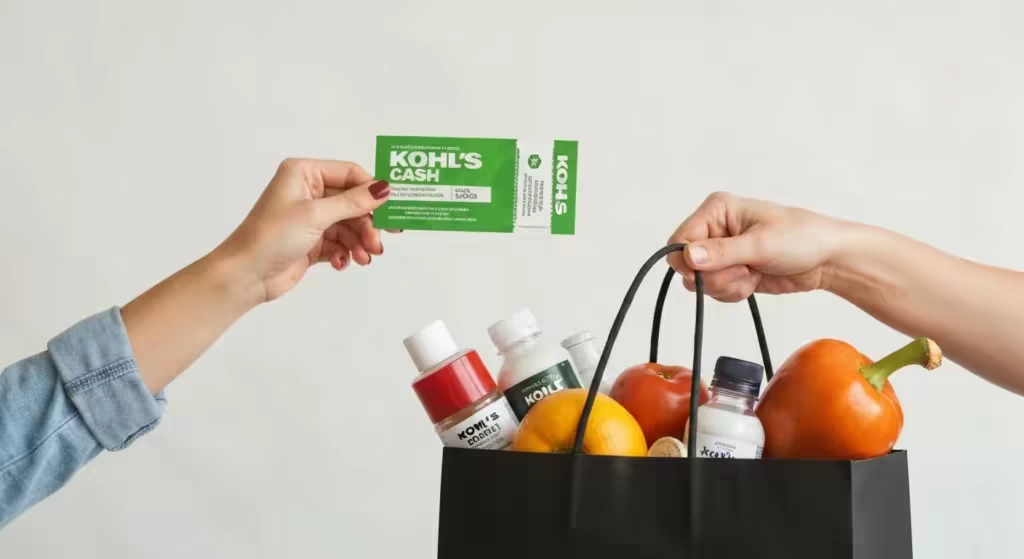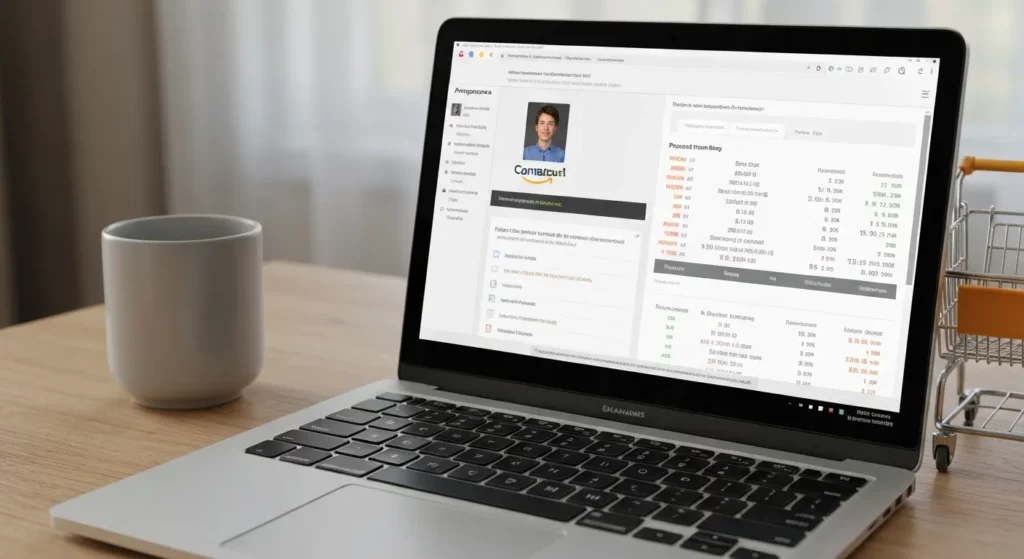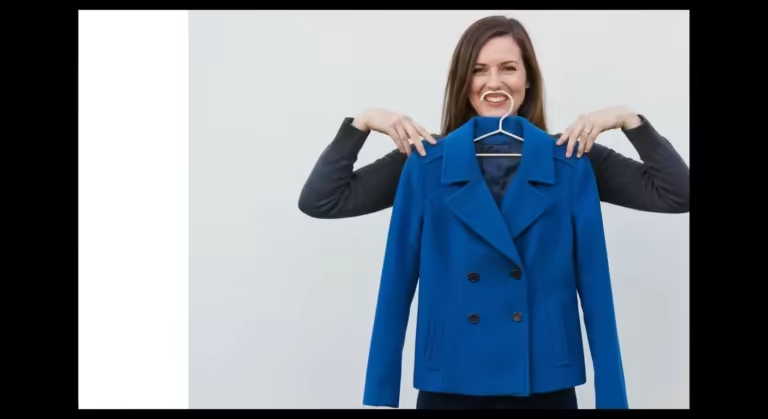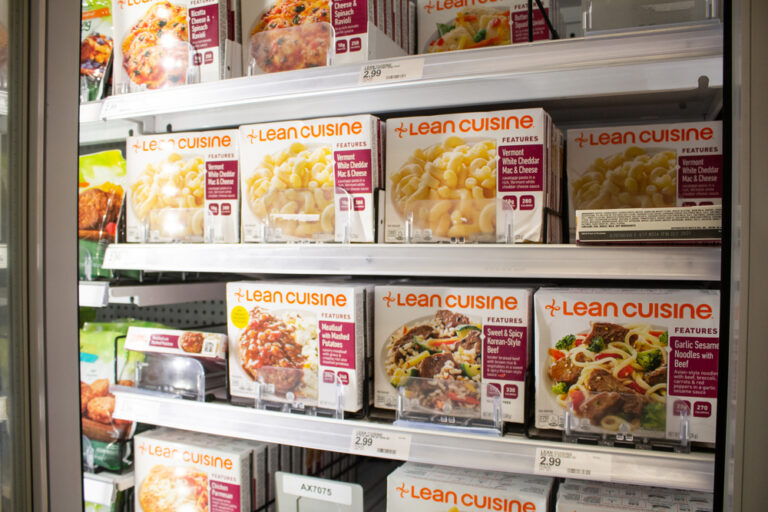When I first retired, I pictured days filled with peaceful walks, long-neglected hobbies, and a sense of calm I’d earned after forty-plus years of work. What I didn’t picture was the quiet, creeping anxiety that came with switching from a steady paycheck to a fixed income. Suddenly, every dollar had a much bigger job to do. My wife, Martha, and I had planned carefully, but the reality of it felt different. It felt… finite.
My initial coping mechanism was to become a “deal hunter.” I saw myself as a savvy shopper, a man who could outsmart the big stores and stretch our nest egg further. I subscribed to every email list, clipped every coupon, and eagerly awaited the weekly circulars. I thought all those red signs screaming “50% OFF!” and “CLEARANCE!” were my allies. In reality, they were sirens luring my budget onto the rocks.
It took a few costly mistakes and a hard look at my credit card statements for me to realize that I wasn’t saving money. I was just spending it more enthusiastically. I was a willing participant in a game where I didn’t even understand the rules. That realization was a bitter pill to swallow. It felt like a failure, not just of my finances, but of my own judgment. But from that low point began a new journey: one of learning to see past the marketing fluff and find the real value. This isn’t a story about deprivation; it’s about how I took back control. Here are the lessons I learned along the way.
-
The “70% Off” Illusion That Cost Me a Small Fortune
My wake-up call came dressed in a rack of deeply discounted dress shirts. A well-known department store, one I’d trusted for years, was having a massive “Retirement Sale” for its founder. The signs were everywhere, plastered in bold, urgent lettering: “UP TO 70% OFF STORE-WIDE!” I walked in feeling like a conqueror. This was it. This was how I would build my new retirement wardrobe without breaking the bank.
I remember the feeling vividly—a rush of adrenaline mixed with a sense of immense satisfaction. I grabbed shirt after shirt. A crisp blue one, originally marked $80, was now just $24. A patterned one, supposedly once $95, was mine for under $30. I filled my arms, did the math in my head, and felt like a genius. I spent nearly $300 that day, but I convinced myself I’d saved over $600. I even bragged to Martha about my haul when I got home, laying out the shirts on our bed like trophies.
The illusion shattered about a month later. We were at the same mall, and I suggested we pop into that store again, just to see if any new “deals” had appeared. The big “Retirement Sale” was over, but a new “Summer Spectacular” was in its place. Out of curiosity, I walked over to the men’s section. And there it was. The same crisp blue shirt I had bought. Its regular price tag now read $45, and it was on sale for $27. My “70% off” bargain was a complete fabrication.
I felt a hot flush of embarrassment, followed by a cold wave of anger. The original $80 price was pure fiction, an inflated number created for the sole purpose of making the “discount” look incredible. My $24 purchase wasn’t a steal; it was just a few dollars less than its everyday sale price. I hadn’t saved $56 on that shirt. At best, I’d saved $3. When I multiplied that feeling of deception across my entire $300 purchase, I felt sick. I hadn’t been a savvy shopper. I’d been a fool.
That was the moment I learned my first, and perhaps most important, lesson: The original price is often meaningless. It can be an arbitrary, inflated number designed to manipulate your perception of value. The only thing that matters is the final price you pay and whether the item is actually worth that amount to you. I walked out of that store with my head held high, not because I was proud, but because I had a new resolve. I would never be tricked like that again.
-
My Humble Notebook Became My Secret Weapon Against Fake Sales
After the department store fiasco, my anger cooled into a quiet determination. I couldn’t trust the price tags, so I decided to create my own source of truth. My solution wasn’t high-tech; it was a small, spiral-bound notebook that I picked up for a dollar at the pharmacy. That little book became my most powerful tool in the fight against marketing fluff.
My first target was a new coffee maker. Our old one was on its last legs, sputtering and leaking. I had my eye on a specific model, a sleek silver machine that promised a perfect brew. At the big box store, it was listed for $129.99. I opened my notebook to the first page and wrote it down: “Coffee Maker Model XYZ – Store A – $129.99,” along with the date.
For the next two months, that coffee maker became my obsession. Every time I was near that store or browsing its weekly ad, I’d check the price and log it in my notebook. The price danced around. One week, a “Flash Sale” dropped it to $109.99. A few weeks later, it was part of a “Kitchen Event” for $99.99. I felt the old urge to pounce, the fear of missing out tingling in my gut. But I held back, clutching my notebook like a shield. My data told me a story, and I wanted to see the end of it.
The true victory came nearly three months after my first entry. It was a random Tuesday. There was no big sale event. No flashy signs. But when I checked the store’s website, there it was: $79.99. It was the lowest price I had recorded by a full $20. I checked my notes one last time, saw the clear pattern of peaks and valleys, and knew this was the real deal. I went to the store that afternoon and bought it. Every morning since, as I pour my coffee, I feel a small, profound sense of victory. I didn’t just buy a coffee maker; I bought it on my terms.
This simple act of tracking taught me the incredible power of patience and observation. Retailers rely on creating a sense of urgency, but most non-seasonal items have a price cycle. By simply writing things down, I removed the emotion from the purchase. The notebook didn’t care about “Limited Time Only.” It only cared about the numbers. It transformed me from a reactive spender into a strategic buyer. It was no longer about the store telling me when a deal was good; it was about me knowing for myself.
-
The “Buy One, Get One Free” Trap That Filled My Pantry with Regret
If there’s one phrase that used to get my heart racing, it’s “Buy One, Get One Free.” It felt like the ultimate win, like getting something for nothing. The grocery store was my primary battlefield for these BOGO deals, and for a while, I thought I was winning the war. My pantry, however, told a different story.
My biggest misstep involved a fancy brand of imported pasta sauce. Martha and I enjoy a good pasta night, but we usually stick to our favorite, reasonably priced brand. One afternoon, I saw a BOGO offer on a gourmet marinara sauce. Each jar was $8.99. My mind immediately did the BOGO math: two jars for $8.99 meant each jar was only about $4.50. That was still more than our usual brand, but my brain framed it as getting a luxury product for a bargain price.
I didn’t just buy two jars. The sign had a “limit of 4 deals per customer,” and my deal-hunter brain interpreted that as a challenge. I bought eight jars, getting four of them “free.” I proudly wheeled my cart to the checkout, feeling like I’d secured our pasta sauce needs for the next year. I had spent over $35 on tomato sauce, but in my head, I had “saved” $35.
The regret set in slowly. We tried the sauce that week, and it was… fine. It was good, but was it “twice-the-price-of-our-usual-sauce” good? Not really. The bigger problem was the sheer volume. Our pantry was suddenly overflowing with these fancy jars. Months went by. Every time I opened the pantry, they stared back at me, a monument to my impulsiveness. We used a few more jars, but honestly, we missed our old standby. Eventually, I noticed the expiration dates were creeping up. We ended up giving two jars away and, I’m ashamed to admit, one expired before we could use it.
I did the real math one evening, looking at the two remaining jars. I’d spent $35 on sauce. We genuinely enjoyed maybe three of the jars. The rest were a burden, a waste of space, and ultimately, a waste of money. The BOGO deal hadn’t saved me money; it had tricked me into spending more than I needed to on a product I didn’t love. I’d have been better off just buying one jar of our regular sauce for $3.
This experience taught me to ask a crucial question before falling for a BOGO deal: “Would I buy even one of these at full price?” If the answer is no, then the deal is a trap. It also taught me to ask, “Do I genuinely need two (or four, or eight) of these right now?” BOGO promotions are brilliant because they short-circuit the part of our brain that assesses need. We only see the “free.” Now, I walk right past most of them. The real saving is buying only what you need, when you need it, regardless of the promotion.
-
Decoding the Fine Print: The Day a “Free” Trial Almost Cost Me Dearly
In my quest to save money, I started exploring the world of online subscriptions. The promise was always so alluring: try our premium coffee/razors/streaming service for free for 30 days! It felt like a no-risk proposition. I could get something for nothing and simply cancel if I didn’t like it. But I learned the hard way that “free” is often just a baited hook, and the fine print is the invisible line waiting to reel you in.
The service that nearly got me was for a “gourmet wellness” subscription box. It promised artisanal teas and healthy snacks delivered to my door. The ad popped up on my computer, offering the first box, a supposed $50 value, completely free. All I had to do was pay a small shipping fee of $4.95. “What’s the harm?” I thought. I entered my credit card details for the shipping, mentally patting myself on the back for scoring another great deal.
The box arrived, and it was nice enough. Some interesting teas, a few bags of nuts. I tried them, enjoyed them, and then, I completely forgot about them. Life got busy, and the trial subscription slipped my mind entirely. About five weeks later, I was reviewing my credit card statement online, a habit I had thankfully developed. My eyes scanned the list of charges, and one stopped me cold: a $49.99 charge from the wellness company.
My heart sank. I immediately felt that old, familiar feeling of being duped. I frantically searched my emails and found the original confirmation. And there it was, buried deep in a dense paragraph of text: “Your 30-day free trial will automatically convert to a monthly subscription of $49.99 unless you cancel at least 24 hours before the trial ends.” I had missed the deadline by a few days.
I spent the next hour on the phone with customer service. The first representative was polite but firm, quoting the terms and conditions I had “agreed” to. I felt helpless. It was my mistake, technically. I was about to give up, resigned to losing the fifty dollars, but then a surge of stubbornness took over. I politely asked to speak to a supervisor. I explained my situation calmly, emphasizing that I was a retiree on a fixed income and that this was a significant, unintended expense. I didn’t yell or accuse; I just explained the impact. After a long hold, she finally agreed to refund the charge as a “one-time courtesy” and cancel the subscription. The relief I felt was immense, but it was overshadowed by the stress of the whole ordeal.
This close call taught me a vital lesson: there is no such thing as a “no-risk” trial when a credit card is involved. The business model is built on the assumption that a certain percentage of people will forget to cancel. I instituted a new, non-negotiable rule for myself. If I sign up for any trial, I immediately open the calendar on my phone and set two reminders: one for a week before the cancellation deadline, and one for two days before. This tiny administrative task is my insurance policy against forgetfulness and predatory billing practices. The most important text is always the smallest.
-
The Psychology of “Limited Time Only”: How I Learned to Ignore the Ticking Clock
Of all the marketing tricks, the one that used to trigger my anxiety the most was the ticking clock. “Flash Sale Ends in 2 Hours!” “40% Off, Today Only!” “Lightning Deal, 87% Claimed!” These phrases created a sense of manufactured panic in me. It felt less like an opportunity and more like a threat: act now, or you will be filled with regret forever. My rational brain knew it was just a sales tactic, but my emotional brain screamed, “Don’t miss out!”
My most memorable battle with the ticking clock involved a new television. Our main TV was perfectly fine. It was a good size, had a great picture, and we were happy with it. But one Saturday morning, an email landed in my inbox from a major electronics retailer. “24-Hour Doorbuster: Top-Brand 65-inch 4K Smart TV – 50% Off! Was $1200, Now Only $599!”
My pulse quickened. $600 off! I immediately started rationalizing. Our current TV was a few years old. This new one was bigger, “smarter,” and had 4K resolution. We could move our current TV into the bedroom. It wasn’t a need, but at this price, it felt like an investment, a smart upgrade. The email even had a little countdown timer, ticking away the seconds, each tick a tiny jab at my self-control.
I spent the next hour in a state of agitated research. I read reviews. I compared features. I even measured the wall in our living room. Martha walked in and saw me with a tape measure and a frantic look in my eyes. “What’s going on?” she asked. I explained the “unbelievable” deal. She listened patiently and then asked a simple, powerful question: “Did we need a new television this morning before you saw that email?”
Her question cut through all the noise. The answer was a clear and resounding “no.” We didn’t. The desire wasn’t organic; it had been planted in my head by a marketing email just an hour before. The “need” was an illusion created by the seemingly amazing price and the urgent deadline.
I took a deep breath. I closed the laptop. I decided to conduct an experiment. I would not buy the TV. Instead, I would endure the feeling of “missing out” and see what happened. For the rest of the day, I felt a little pang of regret. But the next morning, I woke up, and the feeling was gone. Our living room looked just fine. Our bank account was $600 healthier. Life went on, completely unaffected by my “missed opportunity.” And a few weeks later, I saw a very similar TV on sale for a very similar price.
That day, I learned to disarm the ticking clock by creating my own mandatory cooling-off period. Now, whenever I feel that panic-induced urge to buy something from a flash sale, I force myself to wait 24 hours. I close the browser, put down the flyer, and walk away. Nine times out of ten, by the next day, the urgent “need” has completely evaporated. The clock is a psychological trick, and the best way to win is to simply refuse to play the game on their schedule.
-
The Loyalty Program That Wasn’t Loyal to Me
I used to be a collector of loyalty cards. My wallet was a thick, overstuffed brick, filled with plastic cards for every grocery store, pharmacy, and coffee shop I frequented. I felt a sense of pride in this, believing that my loyalty was being rewarded. I diligently scanned my cards at every purchase, watching my points balance slowly inch upward. The promise was always the same: spend with us, and we’ll give back to you. It took a particularly frustrating experience with a hardware store to show me how one-sided that loyalty could be.
This specific store had a tiered program. The more you spent in a year, the better your “status” and rewards. I had a few big projects around the house that year—re-staining the deck, building some garden boxes—so I made sure to buy all my supplies there. I funneled thousands of dollars through that store, proudly watching myself climb from “Bronze” to “Silver” and finally to “Gold” status. I was anticipating a significant reward for my dedication.
At the end of the year, my reward voucher finally arrived in the mail. After spending well over $2,000, my grand prize was a coupon for… $25 off a purchase of $100 or more. I stared at the coupon in disbelief. My “reward” required me to come back and spend even more money. The effective rebate on my thousands of dollars in spending was barely 1%. To make matters worse, the coupon had a host of exclusions—it wasn’t valid on sale items, power tools, or certain premium brands. It was almost useless.
I felt profoundly foolish. I had chosen that store over competitors, sometimes even paying a slightly higher price for an item, all in the pursuit of these loyalty points. I had altered my natural buying habits based on the promise of a reward that turned out to be a pittance. The program wasn’t designed to reward me; it was designed to keep me locked into their ecosystem, spending more money under the illusion of future value. My loyalty was a commodity they had purchased for a very low price.
This led me to perform a “loyalty audit.” I went through my fat wallet and laid out every single card on the kitchen table. For each one, I asked myself some hard questions. What is the actual, tangible return on this program? Does it force me to spend more than I normally would? Are the rewards easy to redeem and genuinely valuable? The results were eye-opening. The grocery store program that gave me direct cash discounts on gas was a keeper. The coffee shop card that gave me a free drink after ten purchases was simple and worthwhile. But the department store card with its confusing points system and the hardware store program with its insulting coupon? I took a pair of scissors and cut them in half. It was incredibly liberating.
My lesson was this: true loyalty should be earned by the store through good prices, quality products, and great service—not through a complicated game of points. Now, I use loyalty programs very selectively. I treat them as a potential small bonus, not a reason to shop somewhere. My loyalty is to my budget first and foremost.
-
The Outlet Mall Epiphany: When “Factory Direct” Meant “Made-for-Outlet”
For years, I believed outlet malls were a shopper’s paradise. The concept seemed so straightforward: brands sold their overstock, past-season items, or slightly imperfect goods directly to the public at a huge discount. A trip to the outlet was an event, a treasure hunt where you could find a $200 jacket for $60. I held this belief for a long time, until one specific trip opened my eyes to the carefully constructed reality of the outlet industry.
Martha and I had driven an hour out of town to a large outlet complex. I was on a mission for a new winter coat from a well-known, high-quality outdoor brand. I walked into their gleaming “Factory Store” and was immediately impressed. Racks were filled with coats, all marked down by 50% or 60%. I found a handsome-looking parka, originally tagged at $350, on sale for $140. It looked like the ones I’d seen in their regular retail store at the mall.
As I tried it on, though, I started to notice little things. The zipper felt a bit less substantial, a little more plastic-y than I expected from this brand. The fabric seemed a little thinner, the stitching not quite as robust. I chalked it up to being overly critical. But then, I looked at the tag inside. Instead of the familiar brand logo, it had the logo plus the words “Factory Store” printed underneath. I also noticed a series of small, strange symbols on the price tag that I’d never seen on their retail products.
A younger, friendlier-looking salesperson was folding sweaters nearby, and a spark of curiosity made me ask. “Excuse me,” I said, “I’m just curious what the difference is between the items here and in your regular stores.” I expected a canned response about overstock, but to my surprise, he was candid. “Well,” he said, lowering his voice slightly, “a lot of what we have here is ‘made-for-outlet.’ It’s designed specifically for our factory stores.” He explained that it allows them to hit a lower price point. They use slightly different materials, simpler construction, and different hardware—like the zipper I had noticed—to cut costs.
It was a genuine epiphany. I wasn’t buying a $350 coat for $140. I was buying a $140 coat, period. The $350 “original price” was a phantom, a comparison to a different, superior product that was never actually sold in this store. The entire premise of getting a high-end item at a bargain price was, in many cases, a marketing illusion. The coat wasn’t a bad coat for $140, but it wasn’t the steal I thought it was. It was simply priced at its true value.
I thanked the young man for his honesty, put the coat back on the rack, and walked out of the store. The entire outlet mall looked different to me after that. I saw it not as a collection of bargains, but as a different tier of retail altogether. It taught me that context is everything. A brand name alone doesn’t guarantee quality, especially in an outlet setting. Now, when I go to an outlet, I evaluate each item on its own merits and price, completely ignoring the “compare at” price. Is this item worth what they are asking for it today? That’s the only question that matters.
-
Embracing the Power of “No”: Finding Freedom in Not Buying
This was perhaps the most profound and difficult lesson in my journey, as it had less to do with tactics and more to do with my own mindset. For a long time, my focus was on finding the *best deal*. My successes were measured by the discounts I received and the money I “saved.” But this still kept me in a consumer cycle, constantly hunting, evaluating, and acquiring. The real turning point came when I realized that the most powerful money-saving tool I possessed was the simple word “no.” The ultimate saving wasn’t getting 20% off; it was spending $0.
I remember one specific Saturday afternoon. A flyer had come in the mail for a big “Home & Garden” sale at a local store. There were deals on tools, patio furniture, and gardening supplies. The old me would have been there when the doors opened, list in hand, ready to stock up. And there were things I could justify buying—our garden hose was getting a bit leaky, a new set of pruning shears would be nice. I could easily spend a hundred dollars and feel good about the “discounts.”
But that morning, I paused. I looked at our current hose. Yes, it had a small leak near the nozzle, but a 50-cent washer would probably fix it. I looked at my shears. They were a bit dull, but I had a sharpening stone in the garage that I hadn’t used in years. I didn’t *need* new things; I just needed to take care of the things I already had.
Instead of going to the sale, I spent an hour in the garage. I found a new washer and fixed the hose. I sat down with my sharpening stone and carefully restored the edge on my pruning shears. It was quiet, focused work. When I was done, my tools were as good as new. I had spent nothing, and yet I felt an immense sense of accomplishment and, strangely, wealth. I felt rich in my own resourcefulness.
That day, I chose not to participate in the cycle of consumption, and it felt incredible. It was a shift from seeking external validation (a “good deal”) to finding internal satisfaction (self-sufficiency). I started applying this everywhere. I’d walk into a store, see something I liked, and instead of asking “Is this a good price?” I’d ask myself, “What is my life like without this item?” Most of the time, the answer was, “Exactly the same.”
Learning to say “no” to impulse buys, to mediocre deals, and even to things I mildly wanted was not about deprivation. It was about liberation. It freed up not just my money, but my mental energy. I was no longer constantly scanning for opportunities to spend. I was calm. I was in control. It gave me the freedom to say a resounding “yes” to the things that truly mattered—saving for a special trip with Martha, treating our grandkids, or simply having the peace of mind that comes with a healthy savings account. The greatest saving I ever found was the saving I got from walking away.
My journey from being a naive deal-hunter to a conscious consumer wasn’t quick or easy. It was paved with moments of embarrassment, frustration, and a whole lot of learning. But each misstep taught me something valuable. I learned that the retail world is a stage, and much of what we see—the inflated prices, the urgent deadlines, the confusing rewards—is just part of the performance.
Today, the anxiety I felt in my early retirement is gone. It’s been replaced by a quiet confidence. I know the difference between a real discount and clever marketing. My little notebook has been retired, replaced by a few simple apps on my phone, but the principles it taught me remain etched in my mind. Martha and I still enjoy a good bargain, but now, we hunt on our own terms. We find joy not just in the things we buy, but in the things we thoughtfully choose not to. And that, I’ve found, is the most valuable saving of all.














